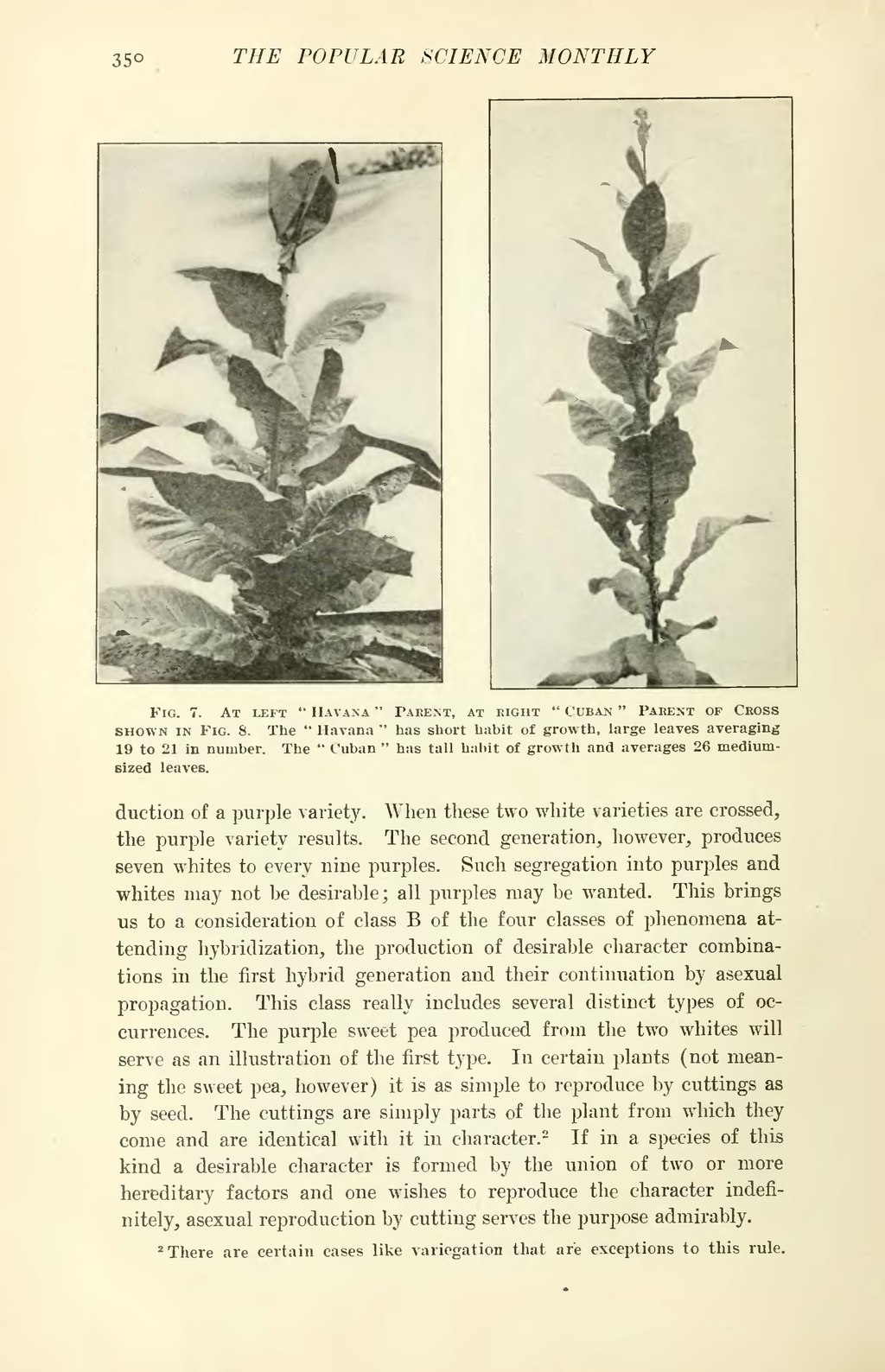hyphenated word was joined on the previous page because of the intervening image.— Ineuw talk 22:23, 24 November 2013 (UTC) (Wikisource contributor note)

of a purple variety. When these two white varieties are crossed, the purple variety results. The second generation, however, produces seven whites to every nine purples. Such segregation into purples and whites may not he desirable; all purples may be wanted. This brings us to a consideration of class B of the four classes of phenomena attending hybridization, the production of desirable character combinations in the first hybrid generation and their continuation by asexual propagation. This class really includes several distinct types of occurrences. The purple sweet pea produced from the two whites will serve as an illustration of the first type. In certain plants (not meaning the sweet pea, however) it is as simple to reproduce by cuttings as by seed. The cuttings are simply parts of the plant from which they come and are identical with it in character.[1] If in a species of this kind a desirable character is formed by the union of two or more hereditary factors and one wishes to reproduce the character indefinitely, asexual reproduction by cutting serves the purpose admirably.
- ↑ There are certain cases like variegation that are exceptions to this rule.

